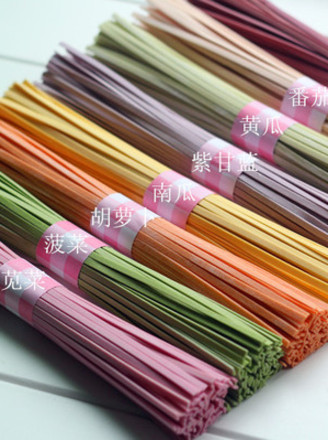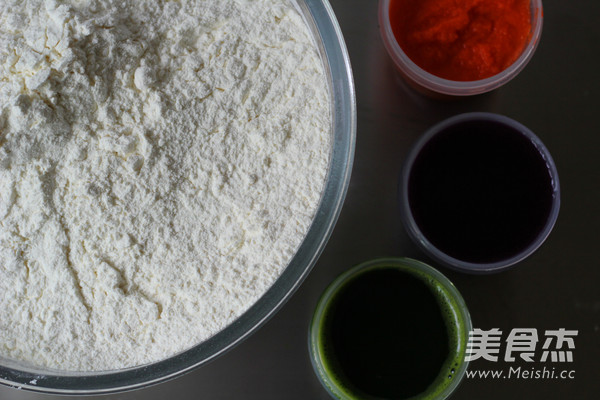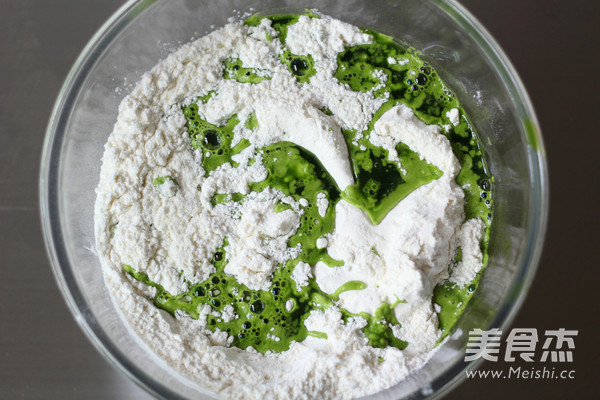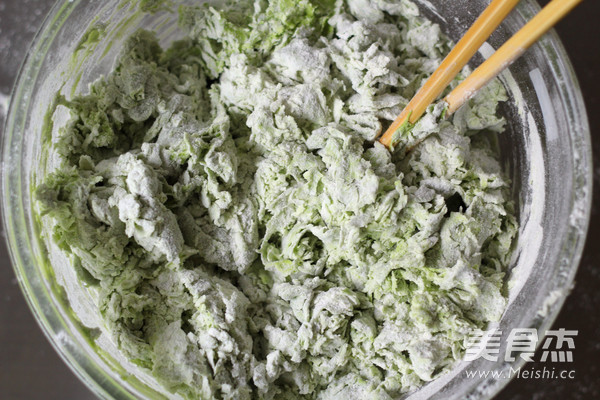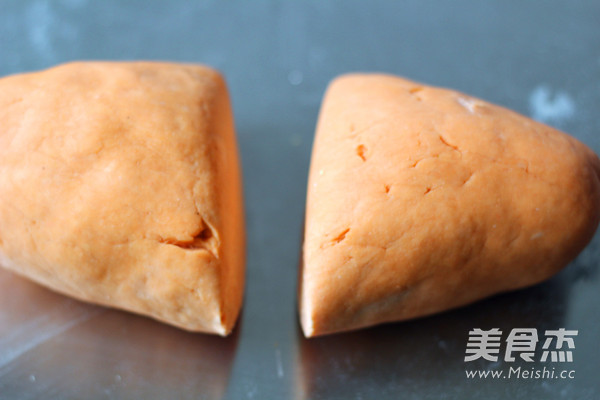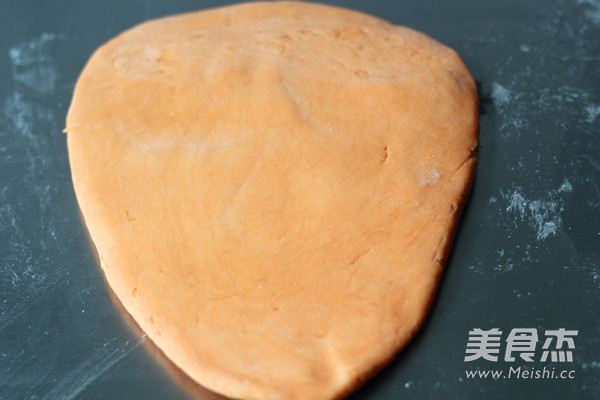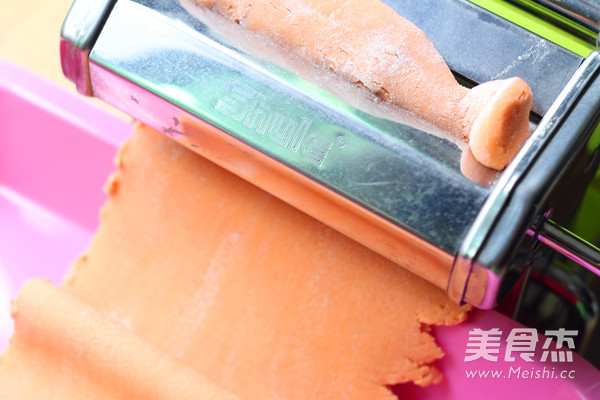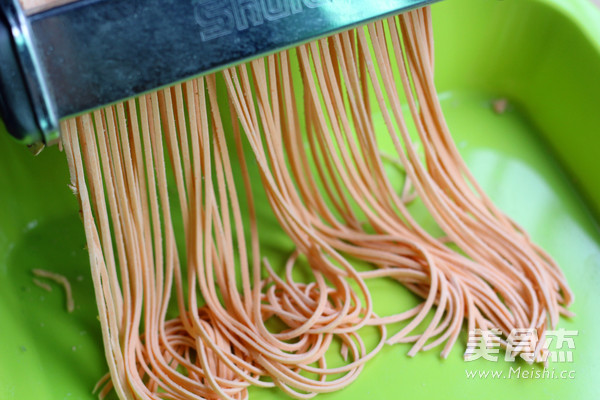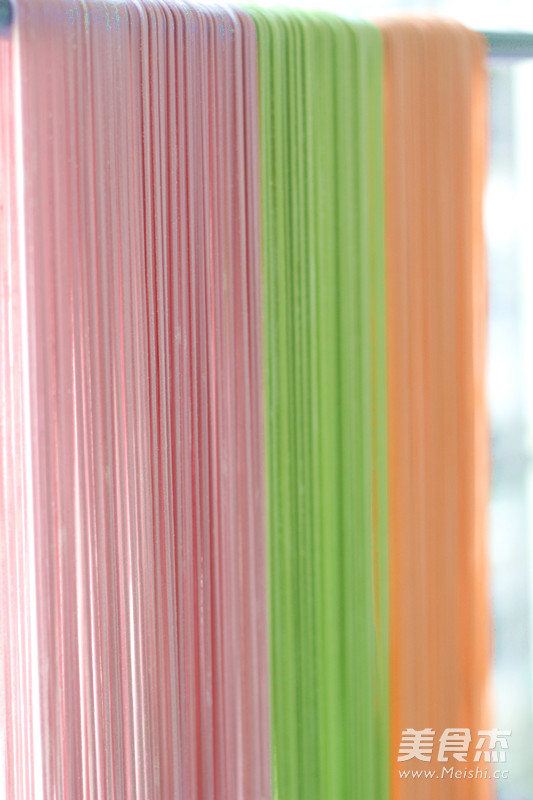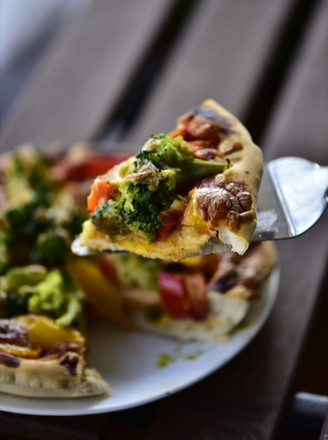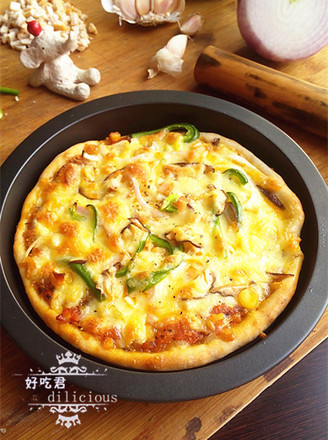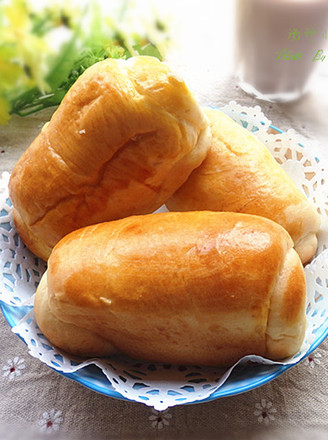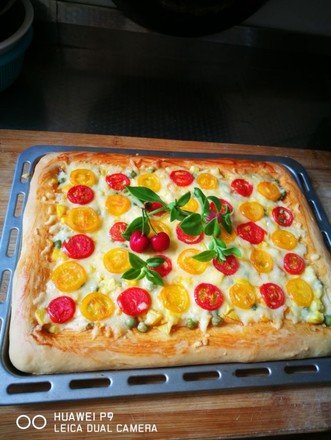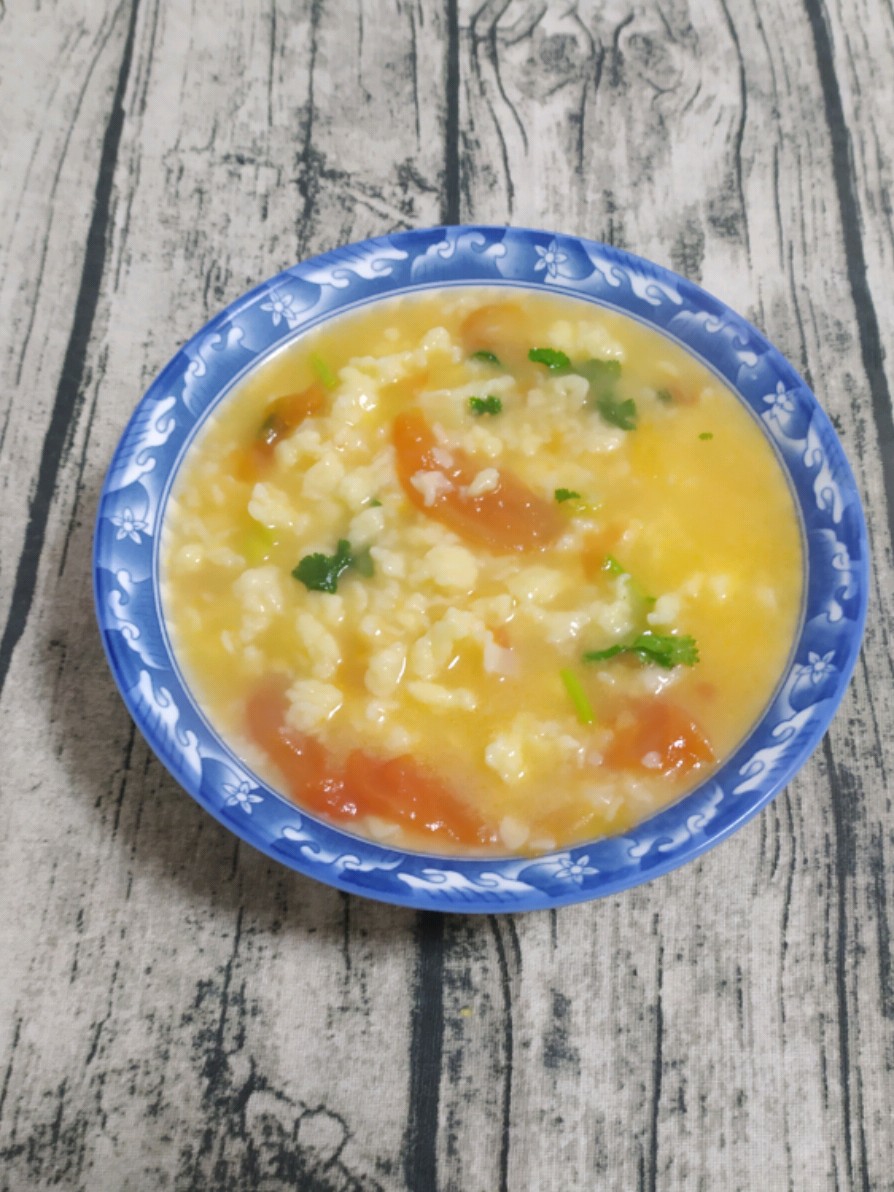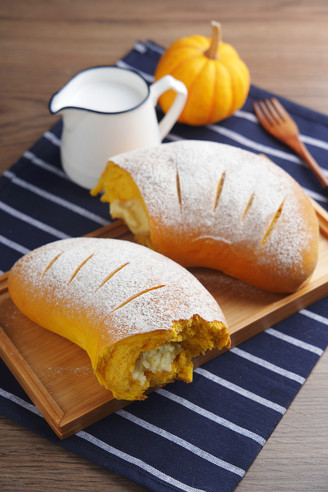Homemade Colorful Handmade Noodles
1.
Prepare flour, vegetable juice, carrot juice, spinach juice, and purple cabbage juice.
2.
500 grams of flour is added to 170 milliliters of vegetable juice,
3.
Use chopsticks to slowly stir into a flocculent shape, and then knead the dough with your hands.
4.
Mix the dough into three colors and put it in a fresh-keeping bag to wake up for about 15 minutes.
5.
The dough is divided into two,
6.
Roll out the dough with a rolling pin,
7.
Put it into the noodle pressing machine and press it into the dough,
8.
Press the dough into a long dough about 2 mm thick, and you can apply a little dry powder.
9.
Cut the dough into round or flat noodles,
10.
After dusting the noodles, roll it up and put it in a box, cover it, put it in the refrigerator and freeze it. It's delicious when you eat it.
11.
You can also hang the noodles to dry. The drier the dough, the longer the noodles are cut, the straighter they hang.
12.
After drying, put it away carefully and cut into sections.


Tips:
1. How to make noodles more powerful and delicious?
Adding eggs and noodles when mixing noodles can increase the elasticity and nutrition of the noodles. The effect of adding salt is to increase the elasticity and the taste is strong, but it is best for babies under one year old to eat softer noodles, so it is best not to add eggs and salt .
2. Why do noodles stick together easily when cut out?
It is easier to make noodle dough if it is mixed harder, and the dough is too soft, and the moisture is too large, so it is easy to stick and break. It is recommended that novices try to use an electronic scale and a measuring cup to accurately grasp the amount of flour and water. It is easier to succeed, otherwise it will be twice the result with half the effort. If the dough has been softened, you can use more dry flour to make a dough sheet. If everything is good, spread the flour and dry it immediately so that it will not stick.
3. Is it easy to break when hung up to dry?
If the noodles are too soft, the noodles will break easily after being hung, and the noodles will become dry and brittle when exposed to the sun or for too long, so they should be placed in a dry and ventilated place to dry. Generally, one day in summer is enough. Take it down carefully, cut it, and let it dry for a day or two.
4. What is the most appropriate ratio of flour and water when making noodles?
First of all, different brands of flour have different water absorption properties, as well as seasonal temperature differences, and different kneading machines have different effects. For example, handwork and noodles are related to personal hand strength and skill. Some people have strong hand strength, and the dough is easier to shape if it is kneaded in place. The machine and the noodles are related to the diameter of the inner barrel of the machine and the speed of the mixing blade. If you just make hand-rolled noodles and eat them first, you can add about 190 ml of water to 500 grams of flour. You only need to sprinkle some dry powder when pressing the dough and cutting into noodles. If you want to make straight and straight noodles, then 500 grams of flour can only put no more than 170 ml of water, so that the noodles are a bit tiring but the dough is very dry, and the pressed noodles are relatively difficult to stick, and it is also not easy to stick to the dough. Not easy to break. As long as you try and explore these things, you will know them well.
5. How much water or juice should be added if no eggs are added?
If there are fewer eggs, add the same amount of water as the eggs. For example, the average egg is about 50 grams, and the amount of water is about 50 grams.
6. What fruits and vegetables can be juiced and pureed for noodles? Can vegetable residue be mixed with noodles?
Carrots, spinach, tomatoes, cucumbers, celery, purple cabbage, pumpkin, purple sweet potato, amaranth, and beetroot can all be used for kneading. Use a juicer to squeeze pure vegetable juice and kneading the noodles for a brighter color. Among them, spinach can be juiced with a cooking machine or a stirring rod with a little water, amaranth is blanched and let cool, and the juice is squeezed out. Pumpkin purple potato is steamed and pressed to make the noodles, but it is best to add a little water to make the puree even and fine. The slushy is better to make the noodles. Vegetable residue can be mixed with noodles, but it must be beaten evenly and without graininess, and because the puree is thicker than the juice, the amount is slightly more than the pure juice.
7. How to store the noodles? How long is it kept?
There are two storage methods, one is to freeze directly, but it is best to store them in bags according to individual food intake to avoid a pile of noodles from being frozen into a large pile that is difficult to separate. If you want to store it in separate bags, just take a bag when you want to cook, boil the water, and shake the noodles with chopsticks. The other is often after drying

